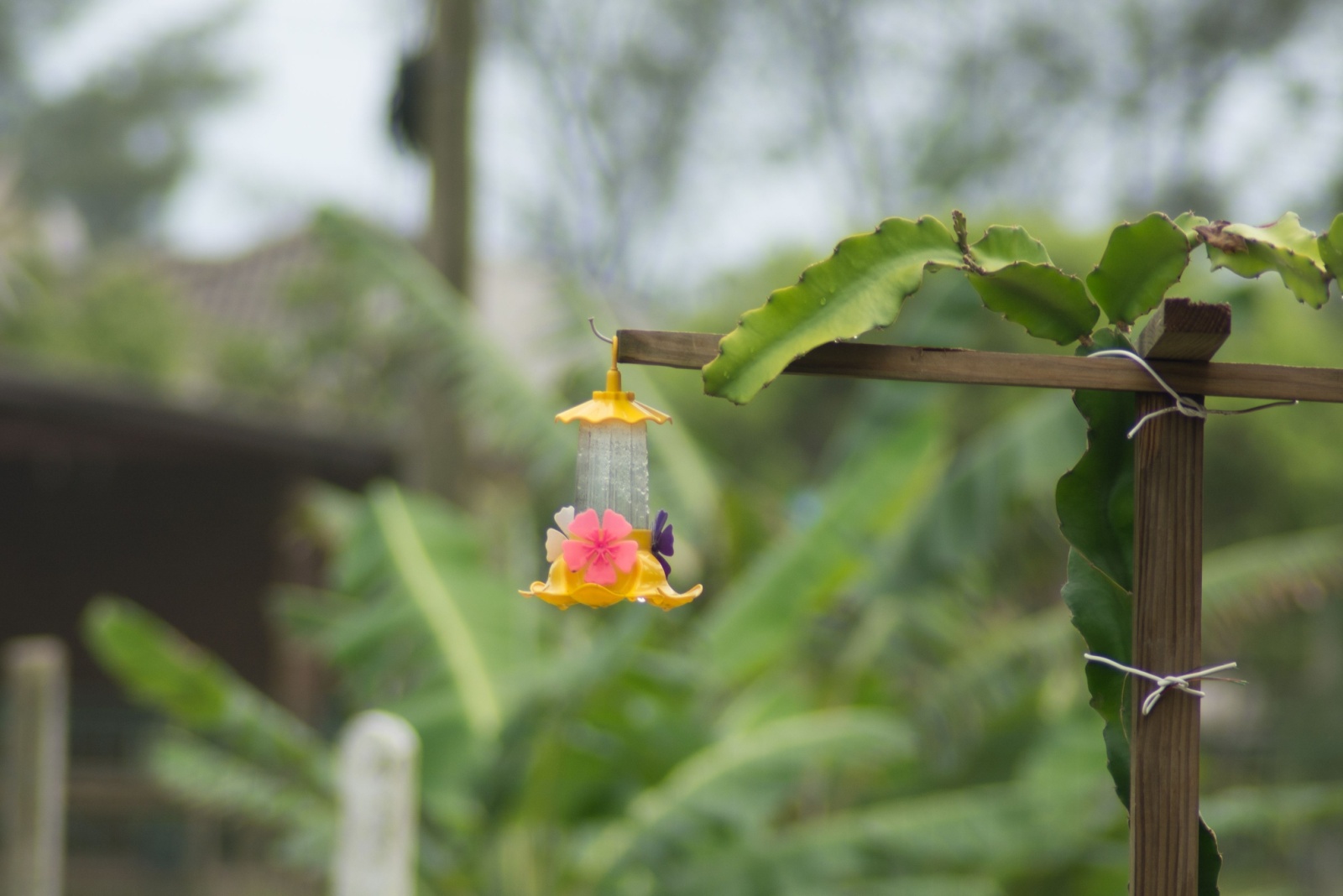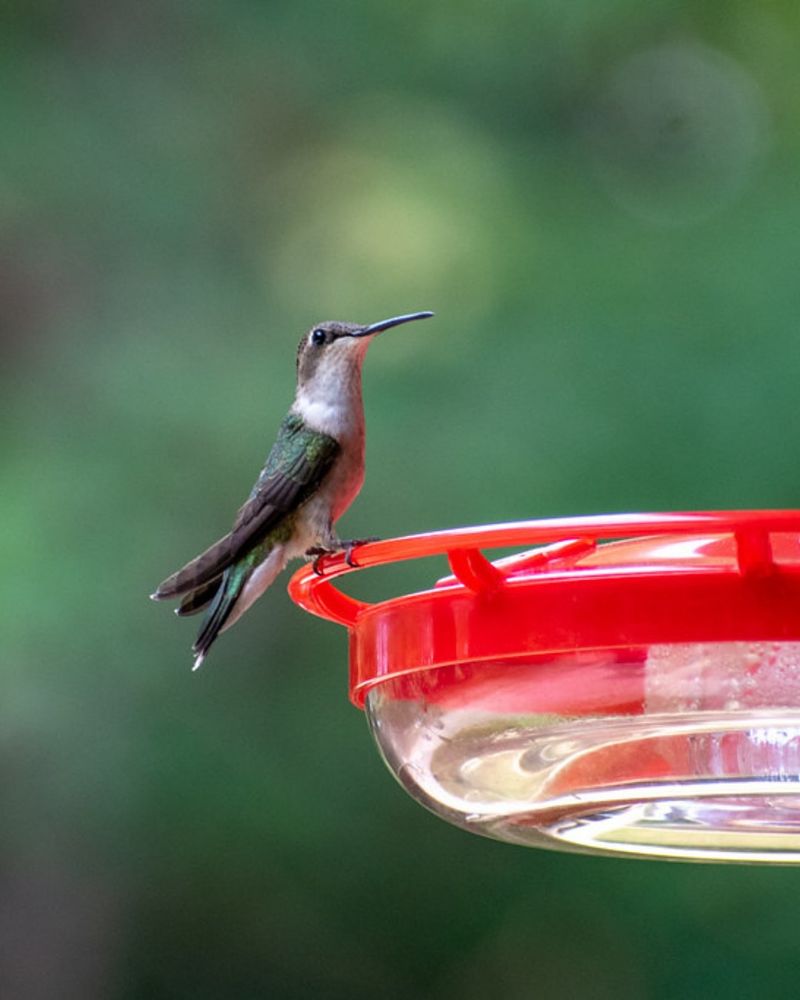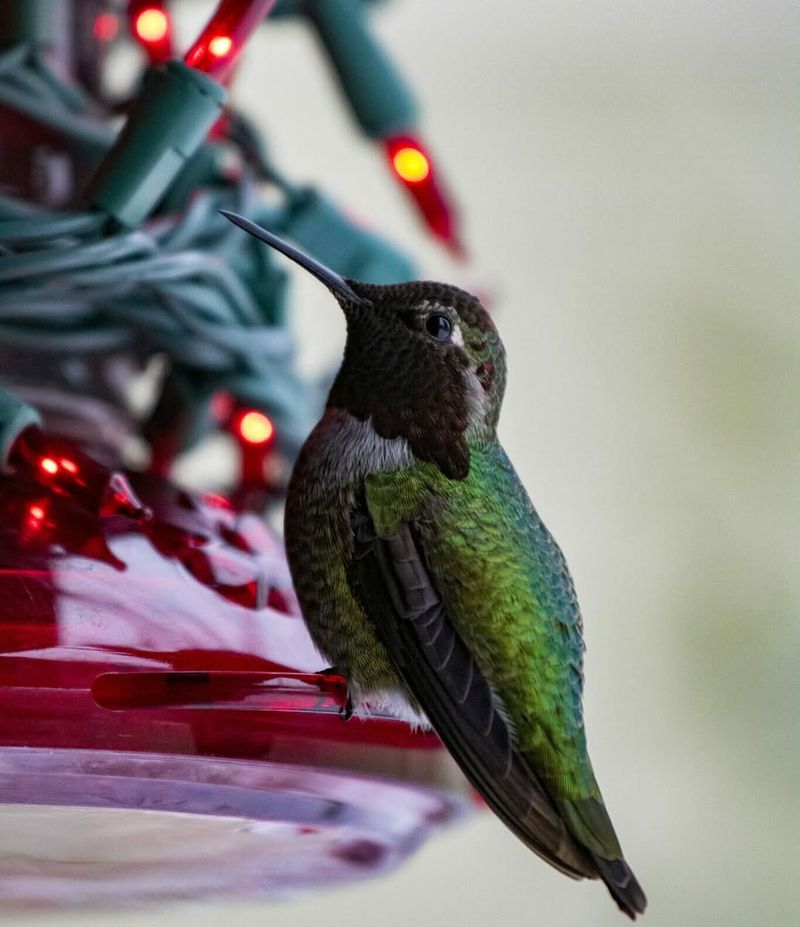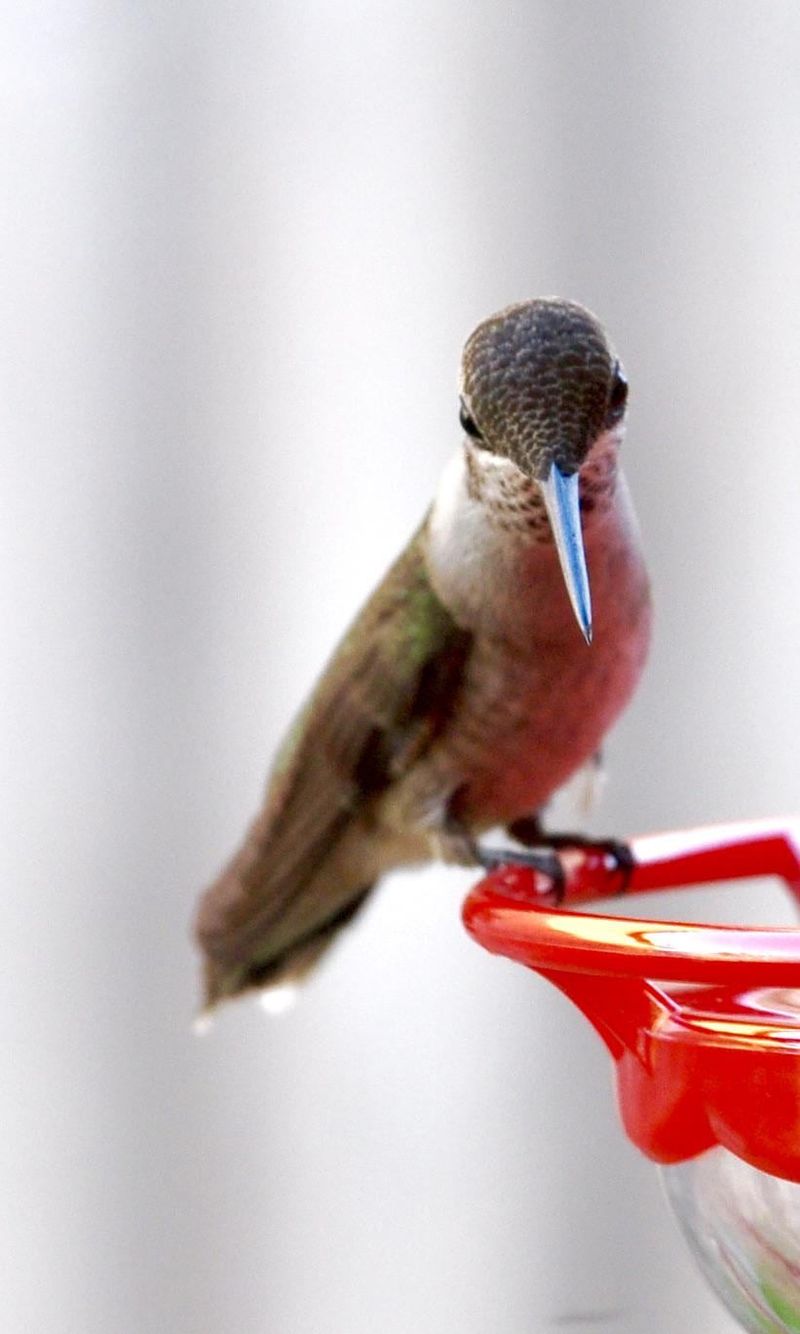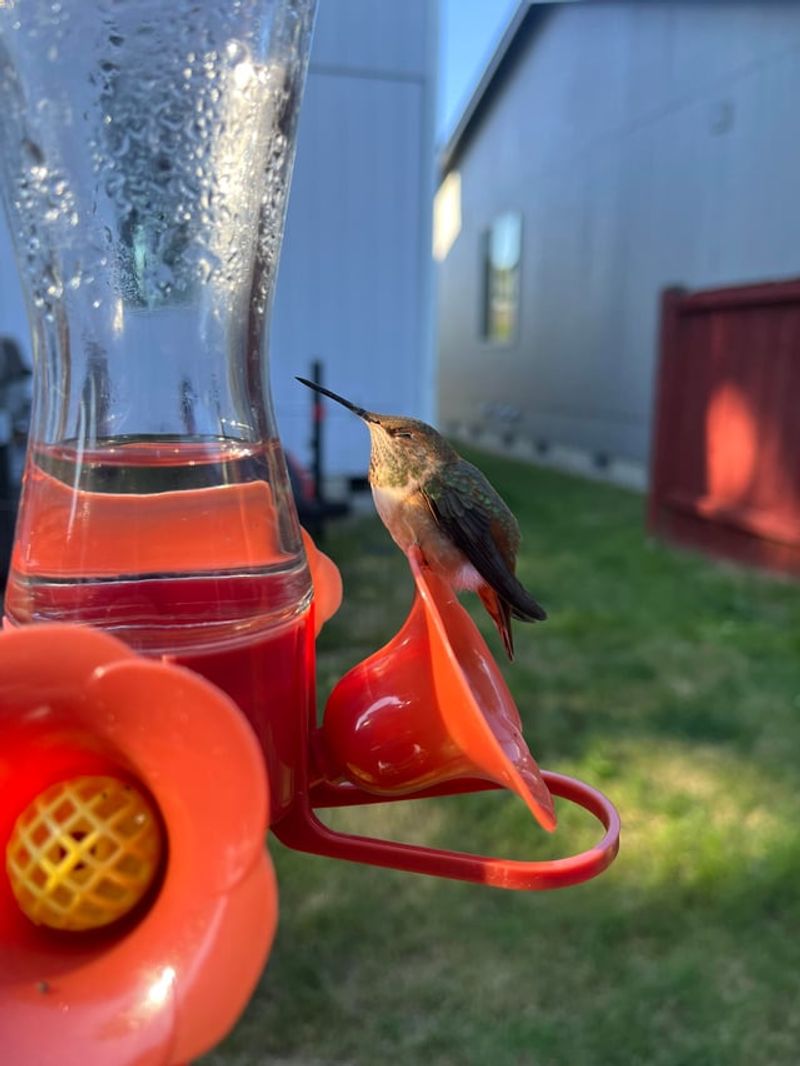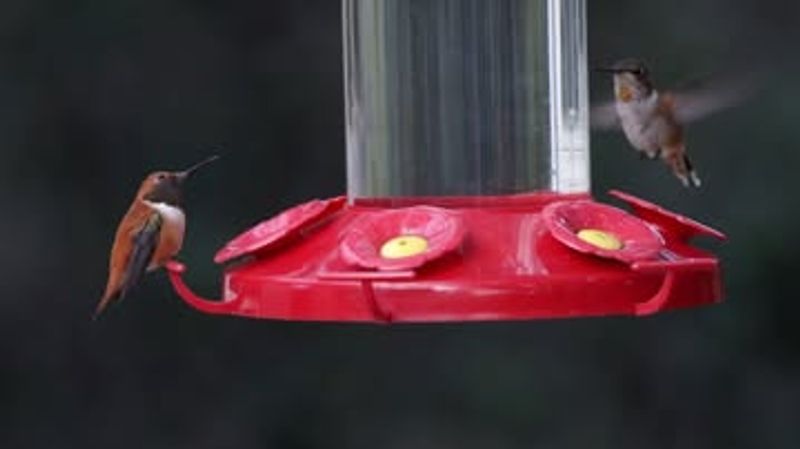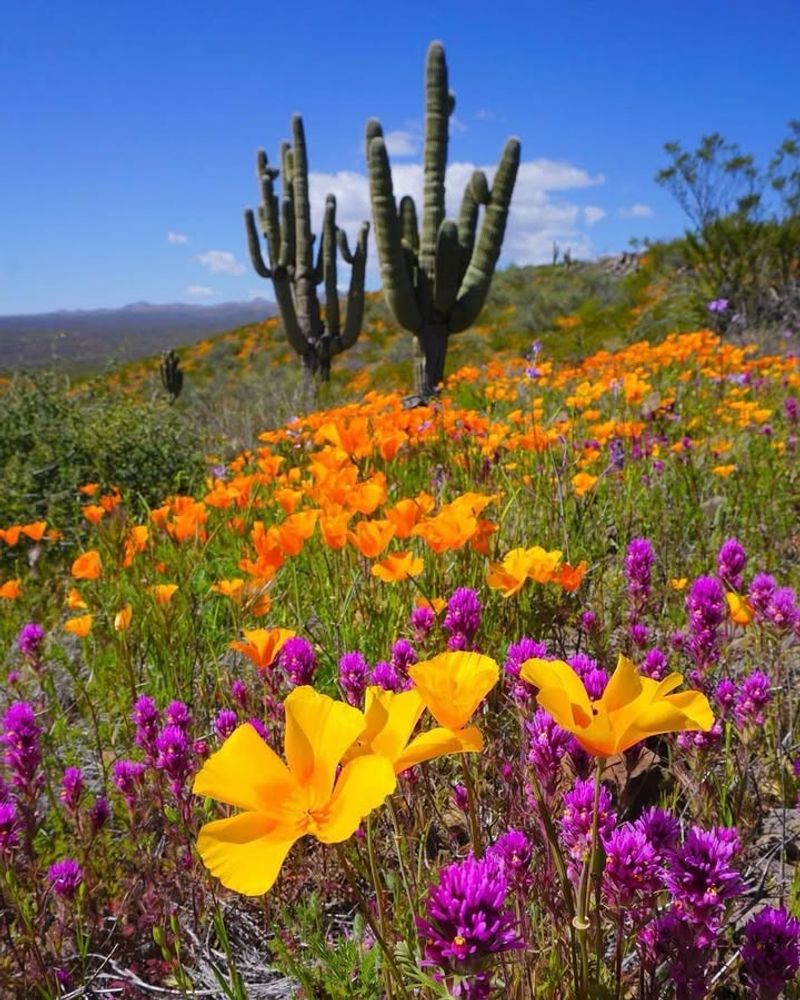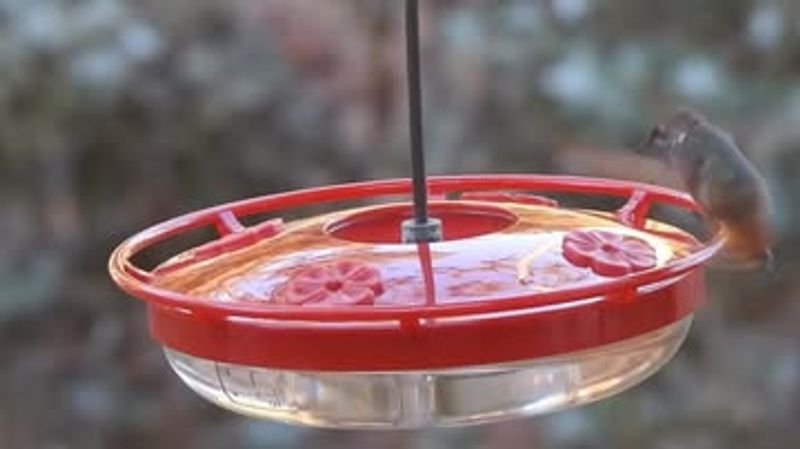Hummingbirds bring joy to Arizona backyards with their dazzling colors and incredible speed. But knowing when to remove your feeders is just as important as putting them out.
Taking feeders down at the right time helps these tiny birds follow their natural migration patterns and keeps them healthy and safe.
1. Migration Season Has Arrived
Most hummingbirds in Arizona begin their southward journey between late September and early November. Rufous and Black-chinned hummingbirds start heading out first, while Anna’s hummingbirds often stick around year-round.
Watch for decreased activity at your feeders as birds prepare to leave. Migration is triggered by daylight changes, not feeder availability, so your feeders won’t stop them from leaving.
Once you notice fewer visitors for two weeks straight, it’s usually safe to take feeders down.
2. Temperatures Drop Consistently Below Freezing
Cold weather can turn sugar water into a slushy mess or even freeze solid overnight. When nighttime temperatures regularly dip below 32 degrees Fahrenheit, your feeder becomes less helpful and potentially harmful.
Frozen nectar can’t nourish hungry birds, and they’ll waste precious energy visiting an unusable food source. If you’re experiencing consistent freezing temps and fewer hummingbird sightings, it’s time to bring those feeders inside.
Consider leaving one feeder out for hardy Anna’s hummingbirds if they’re still around.
3. You Haven’t Seen Hummingbirds In Two Weeks
An empty feeder day after day tells you something important: the hummingbirds have moved on. These energetic birds visit feeders multiple times daily when they’re around, so a two-week absence is significant.
Keep a simple log or mark your calendar to track visits accurately. Sometimes we think we’ve seen birds more recently than we actually have.
Empty feeders attract unwanted guests like bees, wasps, and ants, so there’s no benefit to keeping them up once the hummingbirds have departed for the season.
4. Mold Growth Becomes A Constant Problem
During Arizona’s cooler months, sugar water doesn’t evaporate as quickly, creating perfect conditions for black mold to flourish. Moldy nectar can make hummingbirds seriously ill or even prove fatal.
If you’re cleaning your feeder every other day and still finding mold, that’s a red flag. Combined with fewer bird visitors, this persistent mold issue signals it’s time to pack up until spring.
Your time is valuable, and fighting constant contamination isn’t worth it when birds aren’t even using the feeder anymore.
5. Local Birding Groups Report Departure
Arizona has active hummingbird enthusiast communities that track migration patterns closely. Check local Facebook groups, birding forums, or websites like eBird for real-time reports from your area.
When experienced birders in Phoenix, Tucson, or Flagstaff start reporting that hummingbirds have left, you can trust their observations. They often band and study these birds, providing reliable data about seasonal movements.
Community knowledge saves you from guessing and helps you make informed decisions about feeder removal based on actual sightings rather than calendar dates alone.
6. Natural Food Sources Have Disappeared
Hummingbirds don’t rely solely on feeders—they feed on nectar from native flowers and catch tiny insects for protein. When Arizona’s seasonal blooms fade and insect activity drops, hummingbirds naturally move to areas with better resources.
Look around your yard and neighborhood. If desert wildflowers have finished blooming and your garden plants have gone dormant, there’s little reason for hummingbirds to stay.
Without natural food supplementing feeder nectar, the birds have already followed their instincts to more abundant feeding grounds farther south.
7. Only Year-Round Residents Remain
Anna’s hummingbirds are Arizona’s only true year-round residents, especially in urban areas with mild microclimates. These tough little birds can handle cooler temperatures and will appreciate a winter feeder if you’re willing to maintain it.
If you’re only spotting Anna’s hummingbirds—identifiable by the male’s rose-red head and throat—you can remove extra feeders and keep just one available.
However, if even Anna’s have vanished from your area, there’s absolutely no reason to keep feeders hanging. Wait until February or March to put them back out.

